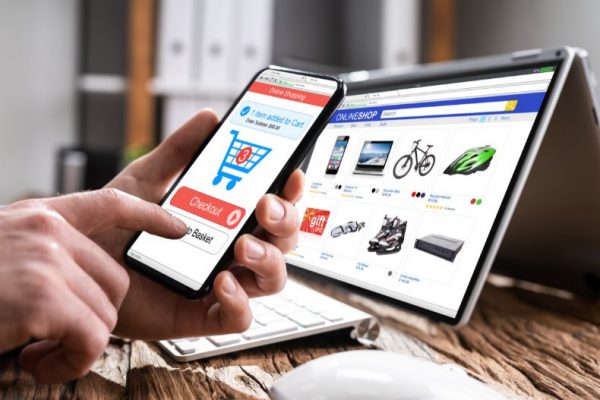In today’s world where the internet rules, developers strive to create and produce applications and user experiences adaptable to various devices. Headless architecture facilitates a decoupled technique for website and application development, allows sharing of mismatched content on numerous platforms and viewable on any device, and builds a central repository of re-usable services in your organization. To decouple their ecommerce architectures, founders need to know the following.

Know What Headless Commerce Is
The rapid growth in the adoption of IoT technologies has pushed numerous retail traders to the headless. The e-commerce industry is the leading implementer of the headless architecture. Headless e-commerce architecture means the frontend content of a commerce store is separated from the backend commerce abilities. Decoupling the backend from the frontend provides businesses with the employable technologies of their choosing and tailor-make the elements they want to boost customer experiences. With decoupled architecture, developers utilize Application Programming Interface (API) to link the backend to the frontend. That allows content generators to update and measure frontend applications’ design and layout without necessitating modification of the backend.
Recognize Why the Decoupling of E-Commerce Architecture Is on the Rise
Decoupling headless e-commerce facilitates content blending with commerce for an excellent digital experience that boosts heightened conversions. The shift in the e-commerce landscape is very noticeable, especially in the recent past, which has witnessed the emergence of Covid-19. Travel restrictions, social distancing and other safety measures were instituted worldwide, pushing consumers to online channels to render everything.
Many consumers use their mobile devices to find their purchases online. That has led most businesses to take the Omni channel approach to offer an incorporated shopping experience throughout all the channels. Decoupling a stack will enable you as the marketer to fully govern user experiences and quickly respond to customer behavior as the developers concentrate on the process management system.
Know How a Decoupled E-Commerce Operates
A consumer browsing for a purchase online will identify a product and proceeds to make a purchase. The headless commerce then communicates to the commerce site by sending it an API call to process the transaction. The API call gathers all data from order management systems, product information, and payment processing info, plus other systems too.
Identify the Benefits of Headless E-Commerce
The demand for customized user experience, quick response to customer fashions, novel technology, and support of more devices. Its benefits are many and exceed those of the traditional platform.
- Personalization: A headless site provides developers with the flexibility of tailoring experiences for shoppers, which boosts conversation and strengthen customer loyalty.
- Omni channel present: API in headless ecommerce enables retailers to design branded content that maintains consistency across the entire channels, adding frontend experiences to any client touchpoint or channel in reaction to market trends.
- Customized platform creation: Headless ecommerce enables a selection of appropriate tools plus programming language for every functionality a business needs, putting them together to develop a seamless architecture.
- Enhanced security: Headless ecommerce facilitates security by separating functionalities. It eases system monitoring and minimizes the chance of a data breach.
- Enhanced website performance: Decoupling a business website enhances website performance, making it faster and more responsive than traditional architecture, as the APIs are particular to the required data.
- Speed to the market: Developers can quickly add new frontend experiences and touchpoints without coding the changes in the backend.
Know the Myths Surrounding Headless Commerce
Certain businesses may remain adamant about changing from traditional ecommerce to headless architecture. Some of those misconceptions include the following.
Translating from traditional to headless architecture requires doing away with the current platform. Another one is that it is expensive to shift to a headless platform. That is a myth because even though the initial investment is high, it saves on the high business costs in the future. Moreover, some think a decoupled infrastructure with numerous modules slows a platform. You cannot substantiate that as the modular structure is quicker and more efficient, rendering the only data required. Lastly, some believe that integrating the API with the microservices renders headless inflexible. However, that is a myth that you must not believe because headless enables great flexibility and agility.
Recognize Whether Headless Is Suitable for Their Business
Headless e-commerce utilizes flexible, entirely tailored platforms or commerce stacks that can tackle complicated operations. That can be overwhelming for small business holders, making it necessary to evaluate the following when thinking of shifting to headless e-commerce.
The high set-up and developmental costs for curating a tech stacking compared to the cost of a one-stop-shop platform.
- Developmental teams are needed to write APIs for linking modules plus micro services.
- Continuous maintenance costs of the advanced system
- The structural complexity of a headless architecture with numerous interlinked areas requires independent debugging
- Micro maintain data decentralization
- Front-end locks off templates for content marketers and others.
- You employ modern automation tools to monitor and run microservices.
- As a business owner, you can opt for a hybrid ecommerce architecture to address the above challenges. However, you must realize that that is less flexible when compared to an entirely headless set up.
Conclusion
As a founder, you need to understand the facts stated above to fully appreciate the positives of decoupling their e-commerce architecture and determine whether it is an idea you would consider taking or not. If your business is small and operates through a small website with minor operations, you are better off using traditional e-commerce and decoupling later when your company expands.











